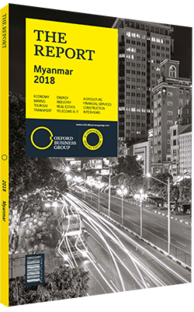Myanmar modernising teaching methods and improving access to quality education
By implementing the National Education Law, along with its supporting policies, the National League for Democracy government has demonstrated its commitment to improving educational quality and access. Building upon these efforts, the Ministry of Education (MoE) has announced a medium-term strategy – the National Education Strategic Plan (NESP) – the first phase of which is set to run from 2016 to 2021.
The foundation of the NESP is based on the recognition that the current education system needs to undergo a major transformation to achieve the learning and career aspirations of the Myanmar people. Covering all aspects of the educational system, from early childhood care and development to basic education, alternative education, technical and vocational education and training (TVET), and higher education, the plan is benchmarked to international standards.
Goals & Shifts
Under the NESP, the MoE has committed to the development of teaching methods, TVET, and research and innovation. To do this, the plan targets nine main areas. For schoolchildren, transformation focuses on improving access to quality preschool and kindergarten education; increasing successful completion of quality basic education; and implementing a basic education curriculum that enables learners to develop knowledge, skills, attitudes and competencies relevant to their lives and the socio-economic development needs of the country. For teachers and administrators, plans include the implementation of a quality assessment system and more interactive methods of teaching in the classroom. For students outside of the formal system, plans aim to expand access to quality-assured alternative education programmes.
At the tertiary level, the strategy seeks to ensure equitable access to higher education that is up to international standards. The NESP also aims to improve access and graduation rates among students pursuing TVET. As such, strategies are in place to establish a more effective management system for TVET programmes.
State of Play
The MoE recognises that the plan’s strategic reform agenda will take more than five years to implement. It has therefore divided the plan into two phases, with phase one running from 2016 to 2021 and phase two running from 2022 to 2027. To ensure targets are met, the MoE will identify and list priority reforms annually in an NESP Annual Priorities Plan. This will enable the ministry to change course as needed, responding to any major developments in the education sector that occurred during the previous year. The second phase will aim to complete priority aspects of phase one as well as implement additional reforms in order to reach the NESP’s broader goals.
Financing Challenge
Preliminary cost estimates for the NESP are based on two scenarios: low and high performance. These include the costs for operating the national education system – which covers personnel, operational and other regular capital costs – as well as the additional costs of the NESP strategies. Under the low-performance scenario, which includes the implementation of around 80% of the NESP’s programmes and targets, the annual cost reaches MMK14.5trn ($11bn). Under the high-performance scenario, which would see even more strategies of the NESP implemented in the first five years, the total cost of the first phase would amount to MMK15.3trn ($11.7bn). Both of these scenarios require massive increases in education funding. The government has allocated MMK1.76trn ($1.34bn) for MoE spending in FY 2017/18.
A key finding of the plan was that delivering improved access to quality education services will necessitate better use of existing finances and more investment across the sector. Finding the necessary funding and quality personnel to carry out the NESP represents a long-term challenge. In all likelihood, implementation will partially rely on financial support from organisations such as UNICEF and the British Council, while in March 2017 the Australian government promised to provide AU$71.5m ($53.9m) to support the MoE’s initiatives.
You have reached the limit of premium articles you can view for free.
Choose from the options below to purchase print or digital editions of our Reports. You can also purchase a website subscription giving you unlimited access to all of our Reports online for 12 months.
If you have already purchased this Report or have a website subscription, please login to continue.

